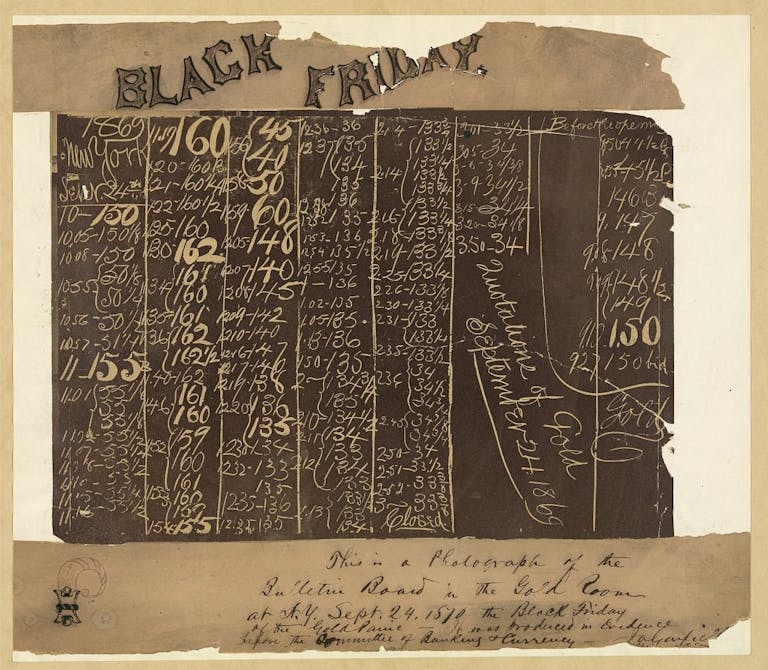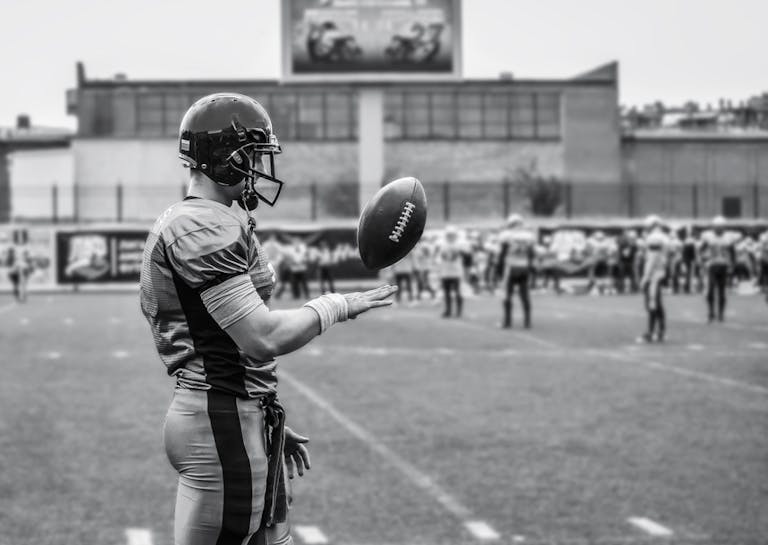
The Dark Secret You Didn’t Know About Black Friday
Digging into the history of Black Friday reveals a dark truth about its origin, and it’s not all cheap deals and sunshine.
Black Friday hasn’t always been about bagging 25% off your ASOS order. It actually goes way back in history – back before ASOS even existed (gasp!).
However, there are two versions of how Black Friday got where it is now, and only one of them is correct. One story paints a nice picture of retailers celebrating their fortune with discounted stock for their customers, while the other (true) version of events is a lot less rosy.
Story number one
The first version dates back to 1869 – back when (according to the photos) everything was in black and white.
A couple of Wall Street scoundrels devised a scheme to buy as much as they could of the USA’s gold. The idea was that by controlling the nation’s entire supply, they could push the prices sky-high before selling on for a tidy profit.
Unfortunately for them, their scheming was eventually found out and anyone that owned any gold at all then scrambled to sell it before its value could plummet. The result of which was that the value did plummet, the stock market crashed, and everyone from Wall Street barons to farmers were bankrupted.

(Photo of the blackboard in the New York Gold Room, 24th September 1869, showing the collapse of the price of gold.)
The story then goes that US retailers traded at a loss for over a year – known in the financial world as being ‘in the red’. Then after a year had passed, the Friday after Thanksgiving, they finally made a profit – ‘in the black’ – from selling discounted stock.
Hence Black Friday, and its association with cheap deals.
Well, kind of. Despite this being one of the first uses of the term ‘Black Friday’, and the version of events a lot of sources suggest to be the origin, this isn’t actually the true history of Black Friday as we know it.
Story number two
The real story starts in Philadelphia during the early 1950s, with an American Football match between the US Army and the US Navy.
The first match, the Saturday after Thanksgiving, was so good that it became an annual tradition. And all of the follow-up matches were so good that they became very popular. So popular that everyone from the surrounding areas flooded into the city on the Friday after Thanksgiving every year to watch them.

And by everyone, we mean everyone. Crowds and crowds of people. Way too many of them. It caused pandemonium. Stampeding through the streets, shoplifting, and people generally getting up to no good.
The police quickly had to be brought in to bring it under control – which was kind of bad news if you were actually in the police.
Any post-Thanksgiving time off? Cancelled. Want to chill with your family? Nope, you’re needed in the city. And, by the way, you’re going to need to work extra long shifts until the weekend is over.
As this kept happening on the same day every year, one bitter policeman labeled the day immediately after ThanksGiving as ‘Black Friday’. The term stuck, it slowly spread across the country, and it’s been associated with the day of cheap deals and reduced stock ever since.
So the real, gritty, terrifying history of Black Friday? A bunch of grumpy policemen who couldn’t take a day off work to watch the football.
True horror indeed – we warned you the real history was dark.



